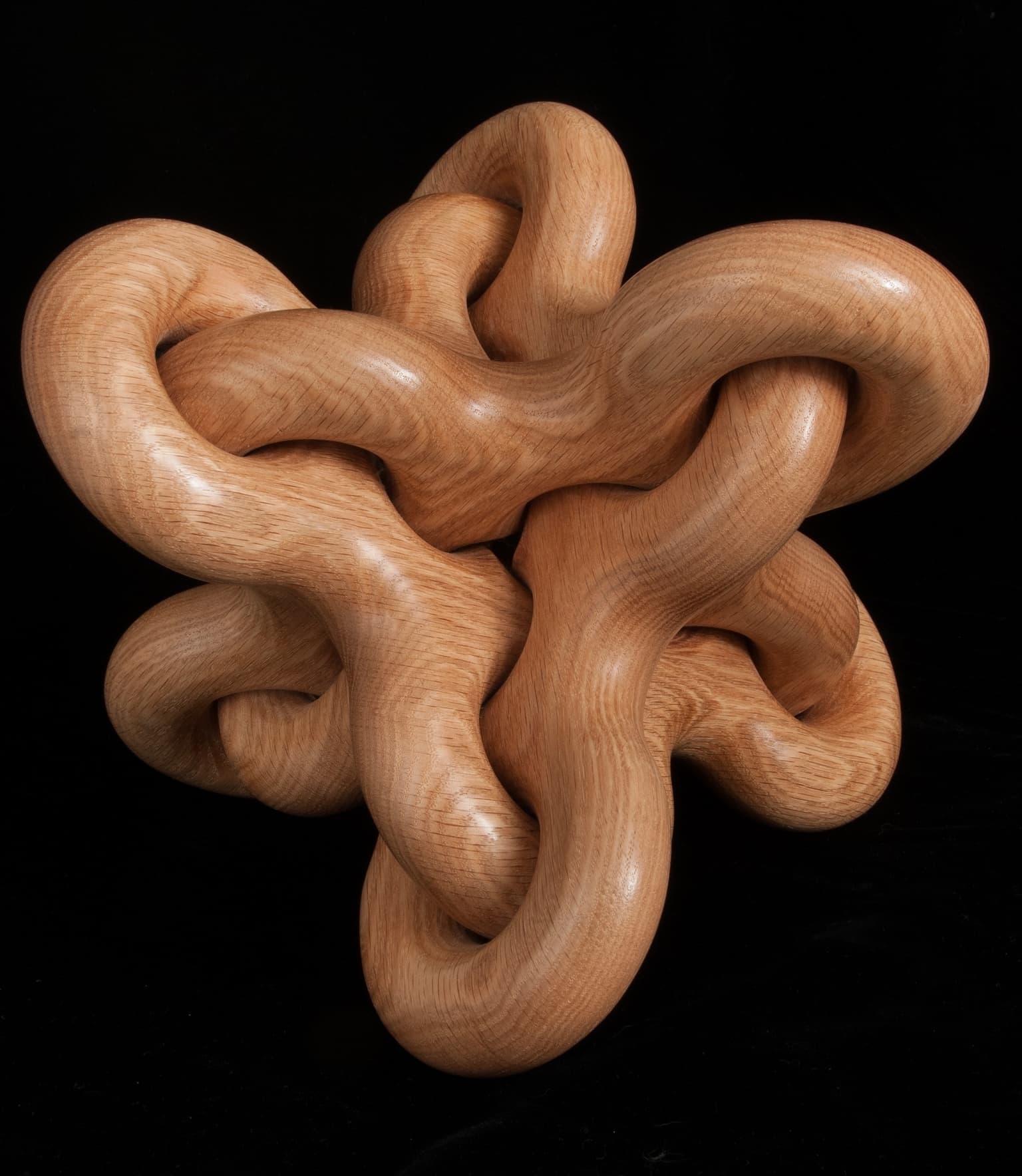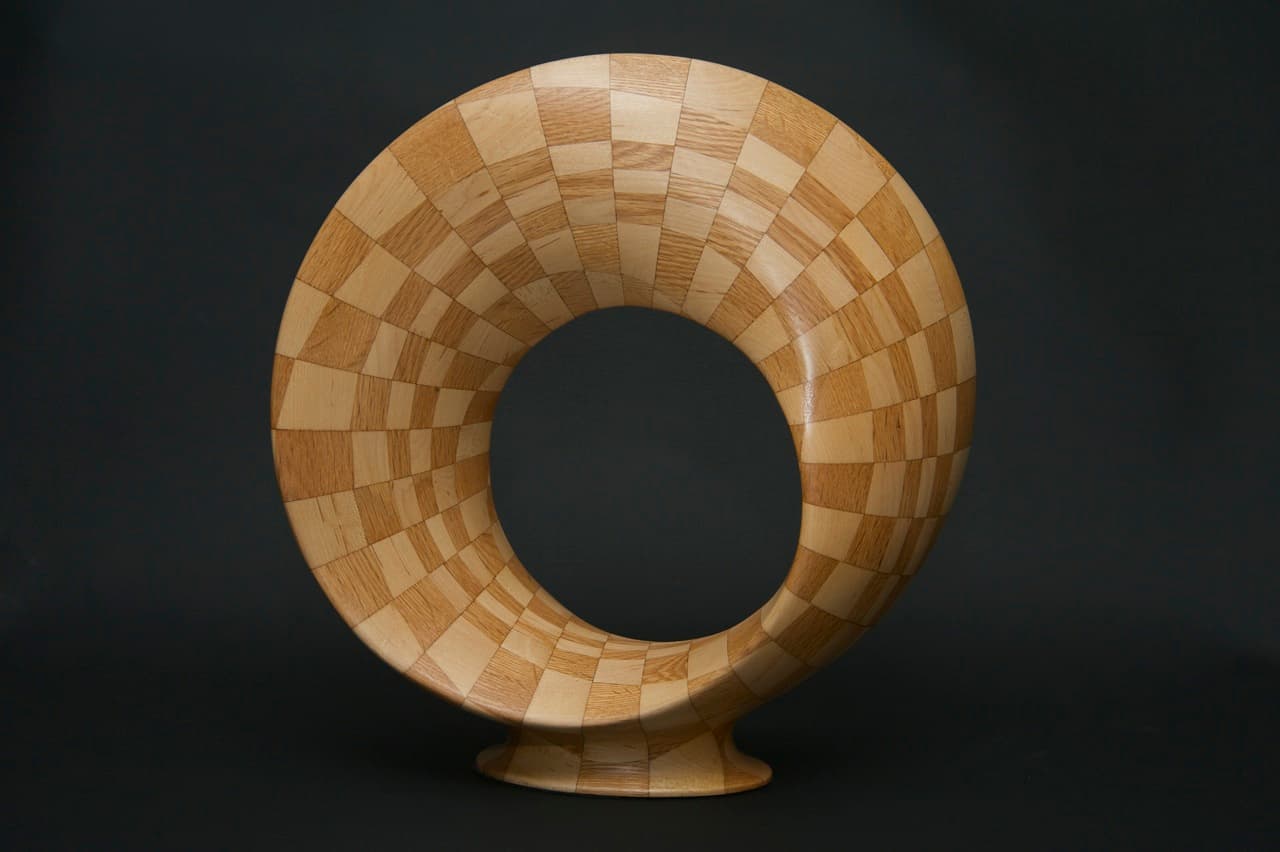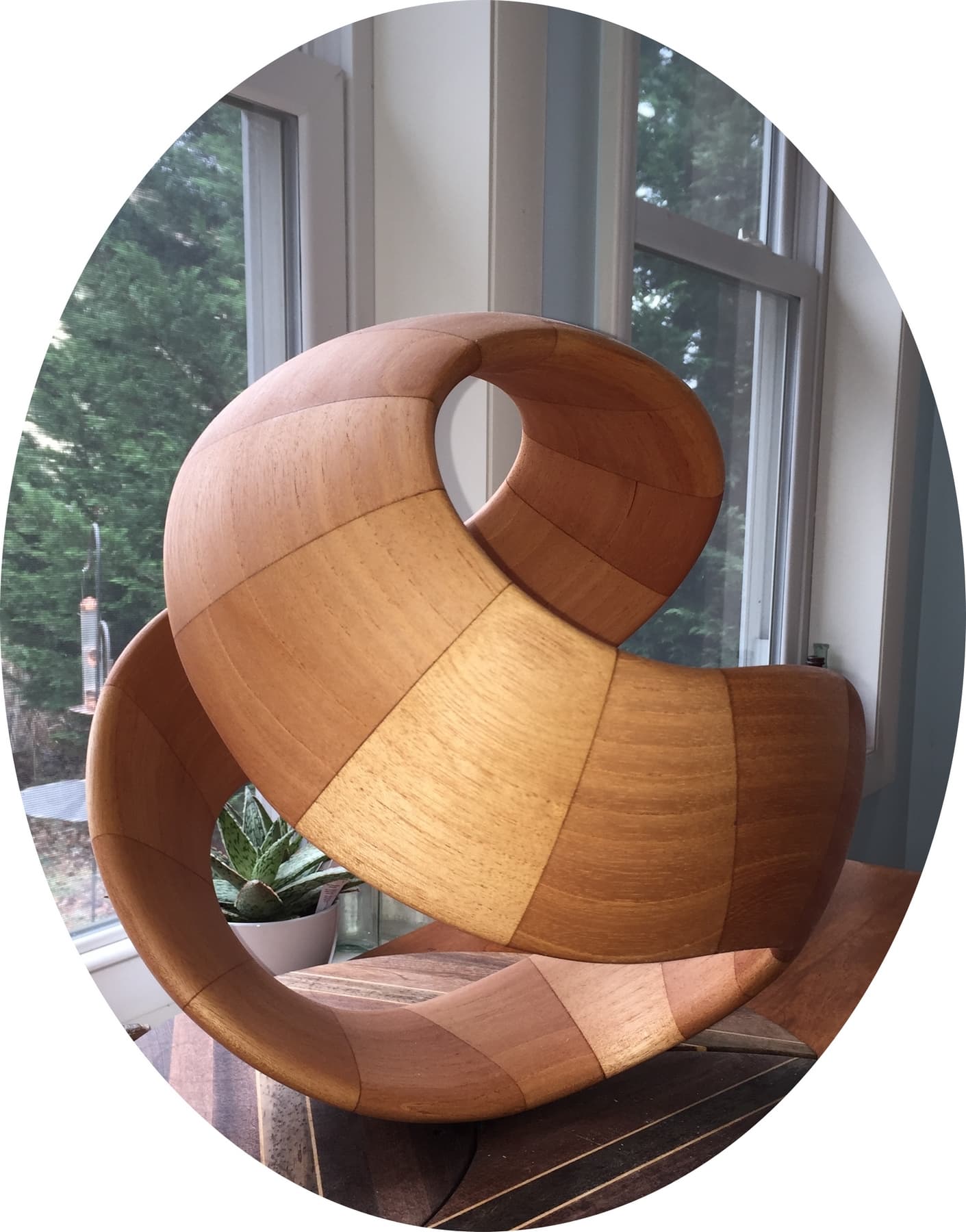Peter Sittner
Artists
Peter Sittner
Wood Artist
Kensington, Md.
Statement
A life long woodworker, I enjoy crafting unique and challenging items. Half the fun is solving the technical problems/puzzles each piece presents. While the math behind my sculptures is basic, it must be precise for the joinery to work. I was first inspired by the geometric carvings of Bjarn Jespersen resulting in my sculpture Hopf Knott. I soon discovered the amazing work of M.C. Escher. Torroid is my 3D interpretation of his print Mobius Band II. My final submission, Squiggle, is a study in joinery where conical staves are joined in such a way as to define the most basic and beautiful of shapes, the sphere.
Artworks

Hopf Knott
33 x 33 x 33 cm
Red Oak
2014
Hopf Knott is the offspring of two forms that have intrigued me for some time, the Hopf Link and the Borromean Rings. While the sculpture may appear to be a series of connected Hopf Links, it is actually two sets of Borromean Rings, an inner set and an outer set. Of course, the "rings" are stretched to make the crossings possible and shaped to resemble Hopf Links. The six outermost points correspond to the vertices of a regular octahedron.
Inspired by the "Magic" woodcarvings of Bjarne Jespersen, where interlocking pieces are carved from a single block of wood, Hopf Knott is, to borrow the term, magic joinery. Here the challenge was to cleanly join the pieces after shaping and finishing.

Torroid
33 x 33 x 11 cm
Red Oak and Maple
2014
Torroid is a Mobius Band. First defined in the 19th century, the form has captured the interest of mathematicians and artists alike. It is unique in that it has only one surface and one boundary component. A mobius is made by adding a half twist to a band and joining the ends. The two sides of the original band form one continuous surface. An insect traveling on this band would visit all of the surface without ever crossing the edge!
Torroid is non-orientable, It has no front or back, left or right. Though asymmetric, it appears identical from any two perspectives 180 degrees out of phase in the horizontal plane. There are 360 pieces of wood used in it's construction, half oak and half Maple.

Squiggle
55 x 55 x 55 cm
Spanish Cedar
2014
Squiggle was inspired by the Hamp Stevens sculpture, A Ribbon on Wood with Hyperbola. Six staves were joined to form a "half" cone. Four half cones were joined, reversing each set and closing the "loop". The model was then carved and smoothed, the outside surface defining a sphere.